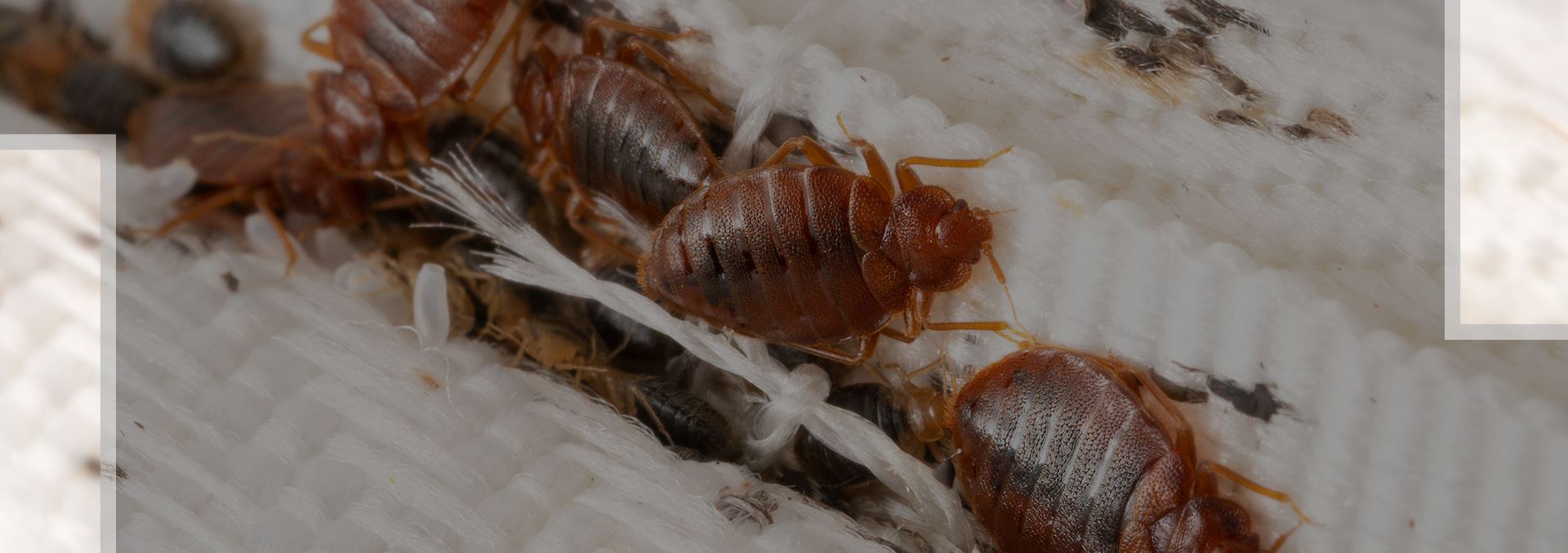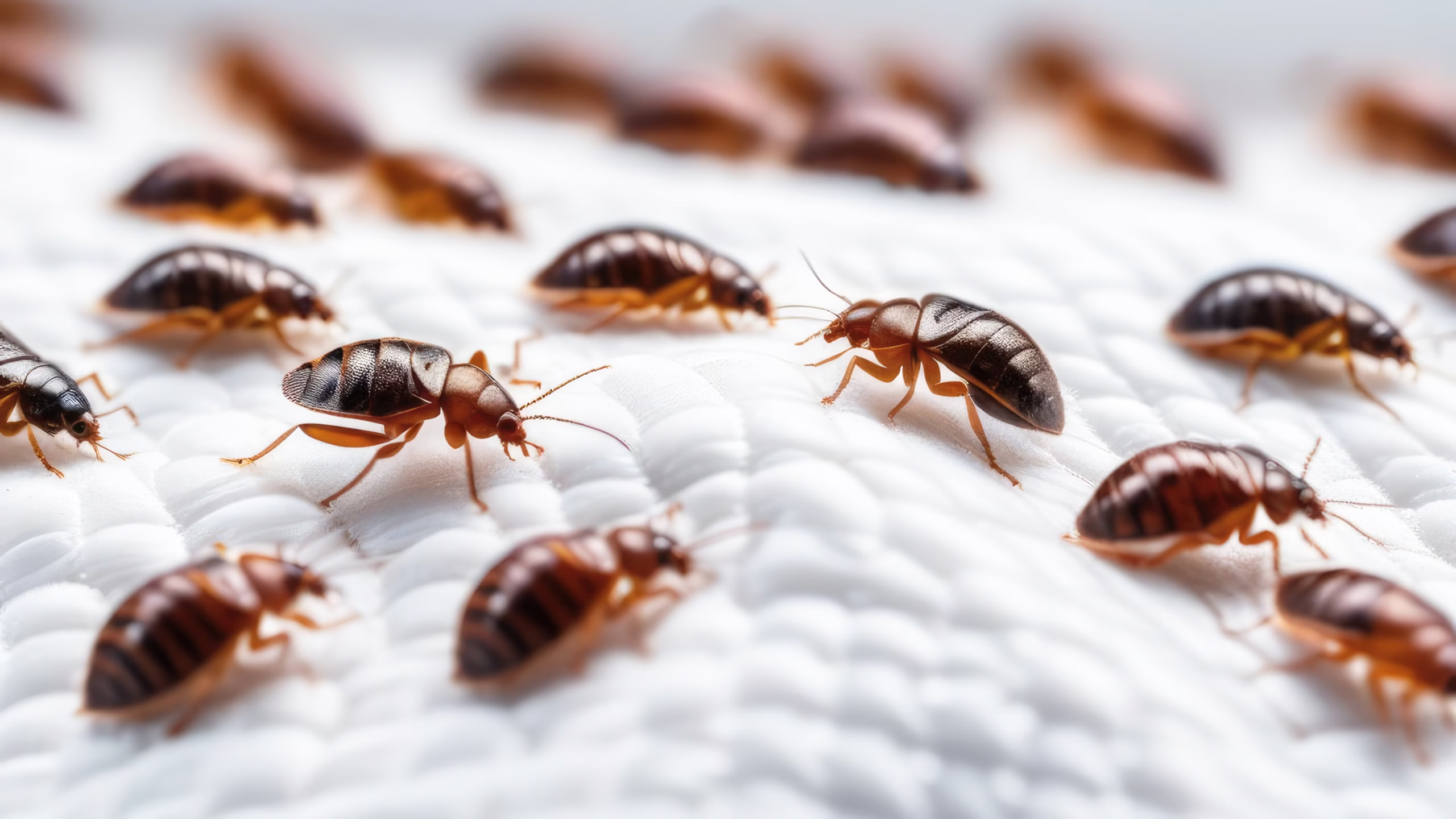Florida’s subtropical climate showcasing warm temperatures, high humidity, and relatively mild winters lets bed bugs remain active and reproduce continuously. In Panama City, a dynamic Gulf Coast hub, these sneaky insects often enter homes, hotels, or short-term rentals through luggage, used furniture, or personal belongings. By the time residents or travelers notice small black flecks on bedding or itchy bites, bed bugs may already lurk in mattress seams, upholstery cracks, or even baseboard gaps. This page highlights why bed bugs flourish in Florida, how to detect them, and why calling on a professional bed bug exterminator is the most effective route to reclaim a bite-free, restful indoor space.
Whether you manage a single-family house in Panama City or also serve nearby Panama City Beach and Lynn Haven, spotting bed bugs early and engaging specialized, multi-stage treatments prevents deeper infestations, occupant frustration, and repeated do-it-yourself methods that regularly skip hidden egg clusters or newly hatched nymphs holed up in tight corners.
Why Bed Bugs Thrive in Florida
Mild Winter Temperatures
In cooler areas, extended subfreezing seasons naturally diminish bed bug activity for months. Florida’s gentle cold season seldom dips near freezing, permitting bed bugs to feed and lay eggs indoors throughout the year. Climate-controlled interiors (roughly 65–85°F) maintain each bed bug life stage egg, nymph, and adult without the seasonal interruptions observed in harsher climates.
Frequent Movement of People & Items
Florida’s tourism, relocations, and secondhand market see a consistent flow of luggage, used furniture, or personal effects perfect bed bug carriers. In coastal communities like Panama City, occupant turnover or short-term rental guests unknowingly transfer bed bugs if occupant or property manager inspections are minimal. A single infested couch or suitcase can ignite a fresh outbreak property-wide.
Numerous Concealment Spots
Bed bugs flatten themselves to hide behind mattress seams, box springs, sofa edges, or baseboards, emerging at night for blood meals. Occupants typically discover them only after noticing bites or black specks on sheets often once bed bugs have expanded to multiple room corners or behind walls.
Rapid Reproduction
A single female bed bug lays multiple eggs daily, each hatching within 2 weeks under Florida’s mild environment. Nymphs reach reproductive maturity in about a month unless occupant or professional solutions disrupt them. Missing a seemingly small group quickly balloons into multi-room issues if occupant or manager response lags.

Telltale Signs of a Bed Bug Infestation
- Itchy Bites or Red Welts
- Commonly on arms, legs, or the neck areas uncovered during sleep forming small, itchy bumps in rows or clusters.
- Some individuals develop large welts; others show mild or delayed reactions, hindering early detection.
- Commonly on arms, legs, or the neck areas uncovered during sleep forming small, itchy bumps in rows or clusters.
- Black Specks or Blood Smears on Linens
- Tiny dark excrement flecks scattering pillowcases, sheets, or mattress corners.
- Rusty spots occur if bed bugs are squashed during or after feeding.
- Tiny dark excrement flecks scattering pillowcases, sheets, or mattress corners.
- Adult Bed Bugs
- Adults measure 5–7 mm, apple-seed shaped, flattening between meals, turning reddish-brown following a blood meal.
- Nymphs are smaller, paler, and typically hidden in seams or cracks until nighttime feeding.
- Adults measure 5–7 mm, apple-seed shaped, flattening between meals, turning reddish-brown following a blood meal.
- Eggs & Molted Skins
- Pinhead-sized, whitish eggs glued to rough surfaces mattress edges, baseboards, or headboard cracks.
- Translucent exoskeletons from nymph molts validate an active bed bug cycle.
- Pinhead-sized, whitish eggs glued to rough surfaces mattress edges, baseboards, or headboard cracks.
- Musty or Sweetish Odor
- Significant infestations might emit a subtle, sweetish or musty aroma from bed bug pheromones.
- Physical proof like excrement, adult sightings, or occupant bite complaints remains more credible.
- Significant infestations might emit a subtle, sweetish or musty aroma from bed bug pheromones.
- Occupant or Guest Complaints
- In multi-room dwellings hotels, condos, or short-term rentals residents notice nightly bites or bugs near beds.
- Swift occupant or manager action stops bed bugs from moving into adjacent rooms or units.
- In multi-room dwellings hotels, condos, or short-term rentals residents notice nightly bites or bugs near beds.
Why Overlooking Bed Bugs Is Risky
Explosive Population Growth
Each female bed bug lays multiple eggs daily. With Florida’s mild winters, eggs hatch in 2 weeks, letting nymphs become egg-laying adults in about a month. A minor infiltration rapidly spans multiple rooms or floors if occupant or professional intervention is postponed.
Sleep Loss & Stress
Because bed bugs feed after dark, occupant rest suffers. Ongoing bites spark occupant worries or insomnia, scanning bedding for hidden feeders. Hospitality operators or short-term rental owners near Panama City Beach or Lynn Haven can face occupant dissatisfaction or negative reviews if bed bugs persist quietly.
Spread to Neighboring Areas
In multi-unit buildings like condos, apartments, or hotels bed bugs traverse occupant luggage, baseboard seams, or hallway traffic, quickly pervading entire properties if occupant or staff housekeeping is inadequate.
More Complex Treatments & Costs
Small bed bug sightings tackled early may only need localized insecticides or partial steam usage. Delaying until bed bugs saturate behind walls or across numerous floors requires occupant relocation for entire-room heat treatments or repeated chemical applications, increasing occupant inconvenience and overall costs.
Health & Reputation Impact
While bed bugs seldom transmit disease, frequent bites produce itching or possible secondary infections from scratching. Owners of rentals or lodging near Lynn Haven risk occupant or guest complaints, brand harm, or occupant mistrust if bed bugs remain unresolved.

Why a Professional Bed Bug Exterminator Is Essential
Detailed Property Examination
A bed bug exterminator inspects mattresses, furniture seams, baseboards, and behind décor for excrement flecks, eggs, or adult sightings. Some rely on specially trained dogs to pinpoint hidden clusters. Correct mapping ensures occupant synergy plus exterminator coverage across every bed bug life stage.
Multi-Stage Solutions
Experts typically combine vacuuming, steaming, chemical insecticide usage, or entire-room heat treatments to eradicate bed bugs at all phases egg, nymph, adult. Single-step occupant tries (like random over-the-counter sprays) frequently eliminate visible adults but leave behind unhatched eggs or newly emerged nymphs deep in cracks.
Heat Treatments
For widespread or multi-room outbreaks, heating interior spaces above 120°F kills bed bugs (and eggs) concealed behind walls, in furniture seams, or electronics. Occupants usually vacate a few hours while exterminators confirm thorough, residue-free coverage saturating each corner.
Targeted Chemical Sprays & Dust
Residual insecticides or dust near mattress seams, baseboards, or sofa folds kill bed bugs returning after feeding. If occupant sightings continue, subsequent treatments or insect growth regulators hamper newly hatched nymphs. Professionals carefully place chemicals, limiting occupant or pet exposure.
Follow-Up & Occupant Education
Since eggs hatch 2 weeks post-laying, occupant or exterminator re-check visits confirm newly emerged nymphs also meet lethal conditions. Occupants may encase mattresses, hot-wash bedding, or discard heavily infested items ending bed bug breeding cycles effectively.
Typical Methods for Bed Bug Treatments
- Inspection & Infestation Scope
- Exterminators hunt for excrement flecks, eggs, or adult sightings around mattresses, couch seams, baseboard edges, or behind décor.
- Confirming if bed bugs occupy one room or an entire floor clarifies whether localized or entire-building coverage is needed.
- Exterminators hunt for excrement flecks, eggs, or adult sightings around mattresses, couch seams, baseboard edges, or behind décor.
- Vacuuming & Steam
- Vacuuming quickly reduces adult bed bugs and eggs on surfaces.
- Steam at 200°F kills bed bugs on contact in deeper seams or tight cracks, leaving no chemical residues.
- Vacuuming quickly reduces adult bed bugs and eggs on surfaces.
- Chemical Insecticides
- Residual sprays or dust placed along mattress edges, furniture crevices, or baseboards hamper bed bug activity after feeding.
- Insect growth regulators disrupt nymph maturation, preventing continuous egg-laying cycles.
- Residual sprays or dust placed along mattress edges, furniture crevices, or baseboards hamper bed bug activity after feeding.
- Heat Treatments
- Occupants leave for a few hours while technicians elevate indoor temps to 120–135°F.
- The intense heat infiltrates walls, furnishings, and electronics, wiping out bed bugs (and eggs) thoroughly without chemical residue.
- Occupants leave for a few hours while technicians elevate indoor temps to 120–135°F.
- Mattress & Box Spring Encasements
- Zippered bed bug–proof covers lock any surviving bugs inside bedding, starving them if they can’t feed.
- Occupants periodically inspect covers for tears or black flecks warning of infiltration.
- Zippered bed bug–proof covers lock any surviving bugs inside bedding, starving them if they can’t feed.
- Clutter Reduction & High-Heat Laundering
- Occupants wash sheets, curtains, or clothes on hot cycles, drying them thoroughly, killing eggs or nymphs.
- Decluttering removes potential regrouping corners for bed bugs after occupant or professional treatments.
- Occupants wash sheets, curtains, or clothes on hot cycles, drying them thoroughly, killing eggs or nymphs.
- Re-Check & Monitoring
- Eggs hatch 2 weeks later. Additional occupant or professional visits confirm newly emerged nymphs also encounter lethal solutions.
- Eggs hatch 2 weeks later. Additional occupant or professional visits confirm newly emerged nymphs also encounter lethal solutions.
Further occupant synergy or repeated chemical/steam usage assures occupant peace of mind.

Service Areas: Panama City, Panama City Beach, Lynn Haven
This page directs solutions for Panama City along with adjacent Panama City Beach and Lynn Haven all within Florida’s mild winter environment where bed bugs persist year-round. Occupant synergy plus specialized extermination remain vital to fully remove or discourage bed bug outbreaks as Florida’s climate encourages continual egg-laying and feeding cycles.
Why Choose Us
Florida-Adaptive Tactics
We mix recognized bed bug solutions vacuuming, steam, insecticidal sprays, entire-room heat paired with occupant synergy (like high-heat laundry, discarding infested items) suitable to Florida’s environment. This occupant plus professional alliance outdoes occupant do-it-yourself approaches typically missing eggs in deeper cracks or newly hatched nymphs behind walls.
In-Depth Examinations
Before using chemicals or heat, technicians meticulously examine bedding, furniture edges, or baseboards for droppings, eggs, or adult sightings. Gauging how many rooms or floors are implicated reveals whether spot or entire-structure coverage best fits occupant needs.
Safe & Focused Chemical Usage
Professionals deploy insecticides or dust along bed bug “highways” mattress seams, sofa folds, baseboard edges rather than flooding occupant floors or counters. For heavier or multi-room issues, entire-room heat saturates electronics, walls, or furniture, eliminating bed bugs thoroughly. Occupant synergy with decluttering or laundering completes the fix.
Ongoing Guidance & Re-Checks
Bed bug eggs hatch 2 weeks post-laying, so occupant or professional re-check visits confirm newly emerged nymphs also meet lethal contact. Occupants might use mattress encasements, hot-launder bedding, or remove severely infested furniture shutting bed bug cycles comprehensively.
Quick, Local Responses
Serving Panama City plus Panama City Beach and Lynn Haven, we understand occupant patterns, short-term rentals, and Florida’s mild winter sustaining bed bug expansions. Our proven methods plus flexible scheduling minimize occupant disruptions, ensuring bed bugs vanish from each life stage fully.
Next Steps
Finding pepper-like excrement specks on sheets, experiencing unexplained bites overnight, or spotting bed bugs near furniture edges? Contact us to learn more or schedule your service. Our bed bugs treatments in Panama City and neighboring Panama City Beach and Lynn Haven bring together property-wide inspections, integrative extermination methods (steam, heat, insecticidal sprays), occupant housekeeping tips, and follow-up re-checks destroying bed bugs at each life phase, preventing repeated hatch cycles.
Act swiftly to protect occupant rest from nightly bites, block bed bugs from burrowing deeper behind walls or across multiple rooms, and avoid occupant frustration with partial do-it-yourself attempts that skip concealed eggs or newly hatched nymphs. Trust our Florida-based bed bug exterminator expertise to pinpoint, eradicate, and deter these parasitic insects, preserving occupant peace under Florida’s mild winter climate that otherwise fosters unending bed bug feeding and reproduction.
